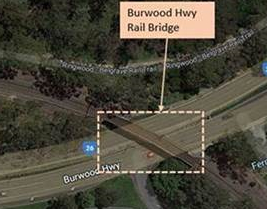Risk Assessments
Risk Assessments in Road Network Environments
Ensuring the safety and efficiency of road networks is a key priority in civil engineering. Risk assessments play a crucial role in identifying hazards, evaluating their impacts, and implementing measures to mitigate adverse outcomes.
For engineering consulting firms like RSA, which specialises in road safety audits and safe system assessments, conducting comprehensive risk assessments is essential to improving road safety, minimising crash risks, and ensuring transport infrastructure meets the highest safety standards. By integrating safe system principles and understanding human factors, RSA helps create road networks that prioritise accessibility and safety for all users, including pedestrians, cyclists, and motorists.
Risk assessments apply similar principles and methodologies as Road Safety Audits to assessing transport and traffic environments, identify issues, quantify risks and consider treatments and solutions.
As with Road Safety Audits, RSA performs risk assessments in any setting involving vehicles and persons, including on and off-road environments such as carparks, freight centres, airports and ports.
Risk assessments consider all network users including motorists, motorcyclists, public transport users, pedestrians, cyclists, heavy transport users and disabled users.
Risk assessments are often undertaken when there is history of ‘near misses’ or crashes. These assessments comprised a structured approach to identifying underlying issues affecting the safety of a traffic environment.


Understanding Risk in Road Networks
Risk in road networks refers to the probability of adverse events—such as crashes, natural disasters, or structural failures—and the severity of their consequences. These risks arise from various factors, including road design deficiencies, human factors, environmental conditions, traffic volume, and driver behaviour. A comprehensive road safety audit examines these elements to prioritise interventions that align with safe system principles, ensuring roads are forgiving of human error and designed to reduce crash severity.
Key Components of Road Network Risk Assessments
- Hazard Identification
The first step in a road safety audit or safe system assessment involves identifying potential sources of risk. Hazards can be physical (e.g., sharp curves, inadequate road markings), environmental (e.g., flood-prone areas, landslides), or operational (e.g., high congestion, poor driver compliance). - Risk Analysis
Once hazards have been identified, the next phase assesses the likelihood of their occurrence and the potential severity of their impact. This step often employs a combination of quantitative methods (such as statistical analysis of crash data) and qualitative assessments based on expert judgement. - Risk Evaluation
Analysed risks are then compared against established criteria to determine their significance and prioritisation. This process ensures that high-risk locations, especially those affecting vulnerable road users (e.g., pedestrians, cyclists, and motorcyclists), are addressed first. - Risk Treatment
Effective risk treatment aligns with safe system principles, aiming to eliminate or reduce risks through engineering, enforcement, and education. Solutions can include:- Engineering interventions (e.g., redesigning intersections, installing median barriers, improving road markings).
- Policy and enforcement measures (e.g., adjusting speed limits, enhancing road rules compliance).
- Behavioural and educational campaigns (e.g., increasing driver awareness of risks and human factors).
- Monitoring and Review
Risk assessments require continuous monitoring to ensure the effectiveness of safety measures. Road conditions, traffic patterns, and safety technologies evolve, making it essential to update assessments based on new data and emerging trends.
Challenges in Conducting Risk Assessments
Despite their benefits, road safety audits and risk assessments present challenges, including:
- Data Limitations
High-quality traffic volume, crash statistics, and environmental data are essential for accurate assessments. Limited or outdated data can hinder effective decision-making. - Dynamic Nature of Road Networks
Infrastructure changes, evolving traffic patterns, and new road designs mean that risk assessments must be regularly updated to remain relevant. - Accessibility and Inclusion
Ensuring that road networks are safe and accessible for all users—including pedestrians, cyclists, people with disabilities, and the elderly—requires careful planning and evaluation of human factors in road design. - Resource Constraints
Implementing safety interventions often requires significant investment. Prioritisation based on risk severity, cost-effectiveness, and alignment with safe system principles is essential.
Case Studies Highlighting the Importance of Risk Assessments
- Bruce Highway, Queensland
In 2024, the Bruce Highway saw a spike in fatal crashes, with over half occurring on sections rated one or two stars by the Australian Road Assessment Program (AusRAP). This underscores the need for ongoing road safety audits and targeted safety improvements. (couriermail.com.au)
Cherry Gardens, Adelaide Hills
A $10 million road safety upgrade was implemented on a 5.5 km stretch of road following nearly 10 crashes per year since 2019. Upgrades included wider lanes, curve widening, skid-resistant surfaces, and new safety barriers, demonstrating the effectiveness of safe system assessments and risk-based interventions. (adelaidenow.com.au)
Best Practices for Engineering Consulting Firms
For firms like RSA, adopting best practices in road safety audits and risk assessments ensures more effective outcomes:
- Use Advanced Analytical Tools
Implement AI-based predictive modelling, neural networks, and FCE to enhance risk assessment accuracy. - Align with Safe System Principles
Ensure all recommendations support a forgiving road environment that accommodates human error and reduces crash severity. - Consider Human Factors and Accessibility
Prioritise road user behaviour, visibility, cognitive load, and accessibility for all groups, including those with disabilities.
Foster Collaboration and Transparency
Work closely with government agencies, urban planners, and community groups to ensure road safety measures address local needs.
Conducting comprehensive risk assessments, road safety audits, and safe system assessments is crucial for identifying hazards, enhancing accessibility, and improving road safety. By leveraging safe system principles, human factors research, and advanced methodologies, RSA can contribute to a safer, more resilient, and accessible road network for all users.
Case Studies

Bridge Protection Beam, Burwood Highway, Melbourne
A rail bridge passes over a road at an angle, with its collision protection beams parallel to the bridge. Skewed

Tarrawarra Winery, Victoria
RSA was requested to assess the risk of agricultural farm machinery entering a proposed roof-top car park, and potentially beyond

Myers Creek Road, Healesville, Victoria
Motorcycle road safety treatments on Myers Creek Road, Healesville, Victoria over 14km.